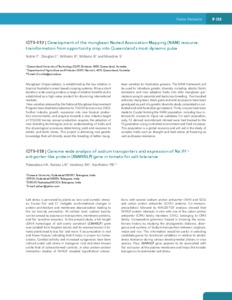Genome wide analysis of sodium transporters and expression of Na+/H+-antiporter-like protein (SbNHXLP) gene in tomato for salt tolerance
Abstract
Salt stress is perceived by plants as ionic and osmotic stresses. Excess Na+ and Cl- instigate conformational changes in protein architecture and membrane depolarization leading to the ion toxicity perception. At cellular level, sodium toxicity can be sensed by plasma ion transporters, membrane proteins, and Na+ sensitive enzymes. In the present study, a full-length cDNA homologue of salt overly sensitive1 (SbNHXLP) gene was isolated from Sorghum bicolor, and its overexpression in tomato plants lead to less Na+ and more K+accumulation in root and flower tissues indicating that it helps in proper ion homeostasis. Cambial activity and increased xylogenesis have been noticed under salt stress in transgenic root and stem tissues unlike that of untransformed controls. In silico protein-protein interaction studies of NHXLP revealed hypothetical interactions with several sodium proton antiporter (NHX and SOS) and cation proton antiporter (CHX) proteins. Co-immunoprecipitation followed by MALDI-TOF analysis showed that NHXLP protein interacts in vitro with one of the cation proton antiporter (CPA) family members CHX2, belonging to CPA1 family. Comparative genomics helped in knowing the evolutionary history by studying the phylogenetic distance, divergence and synteny of Sodium transporters between sorghum, maize and rice. This information would be useful in selecting candidate genes for functional validation in relation to abiotic stress tolerance during various developmental phases in crop species Thus, SbNHXLP gene appears to be associated with Na+ exclusion at the plasma membrane and helps the tomato transgenics to ameliorate salt stress

